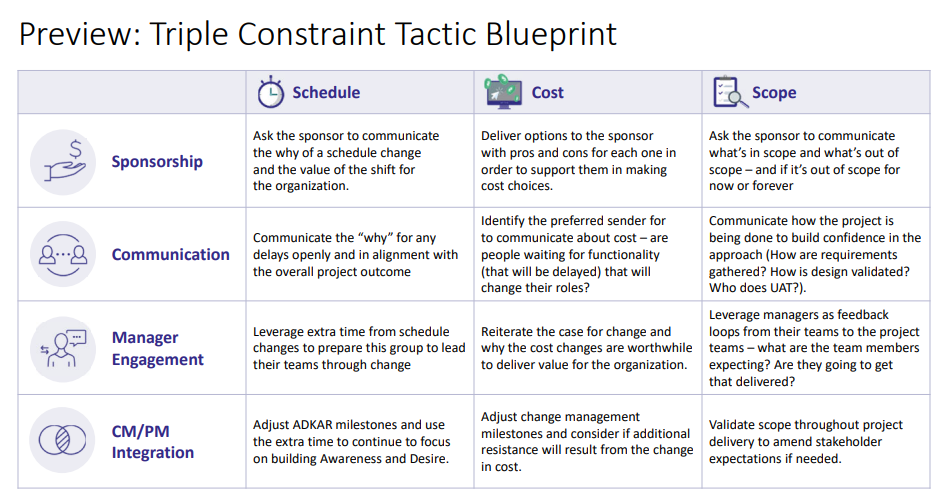Key insights from a recent article on this topic:
Adoption and usage don't just happen automatically. Even with the perfect technical solution, people need to transition to new behaviors.
Research shows projects that integrate PM and CM have higher success rates and effectiveness in meeting objectives. Integration can involve aligning on a shared goal, clarifying roles, sequencing milestones and tasks, as well as combining tools.
Active sponsorship, frequent communication, manager engagement, and CM/PM integration are top contributors to project outcomes.
Sponsors play a key role in explaining changes to constraints. This builds confidence and reinforces the "why."
Engaging managers prepares them to lead teams through changes and shifts. Their feedback identifies misalignments.
Adjusting change management activities alongside constraints gives more time to build awareness and address resistance.
Validating scope against perceptions keeps expectations aligned with reality.
Planning for CM milestones upfront enables incorporation into project timelines and plans.
Bringing change principles to project constraints can pave the way for adoption, usage, and lasting results. Copy of the full article: How To Manage Your Triple Constraint With Change Principles (prosci.com)

